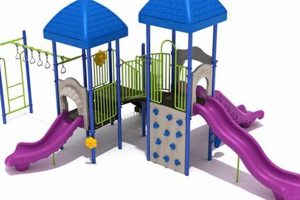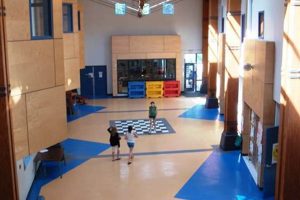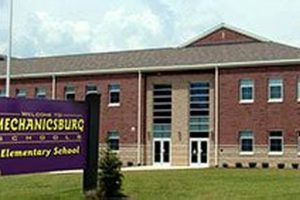This educational stage typically encompasses grades four, five, and sometimes six, bridging the gap between the foundational skills learned in primary grades and the more complex subjects explored in middle school. Students in these grades delve deeper into core subjects like reading, writing, mathematics, science, and social studies, developing critical thinking and problem-solving abilities. For example, reading comprehension moves beyond basic decoding to analyzing texts for deeper meaning, while math introduces more abstract concepts like fractions and decimals.
This period is crucial for fostering independence, responsibility, and a lifelong love of learning. It provides a supportive environment where students can explore their interests, discover their strengths, and develop essential social-emotional skills. Historically, the division of elementary education into distinct lower and upper levels emerged as a way to better address the evolving developmental needs of children. This structure allows educators to tailor curriculum and instruction to the specific cognitive and social capabilities of students at each stage.
Further exploration of specific curriculum components, teaching methodologies, and the unique characteristics of students in this age group will provide a more complete understanding of this vital phase of education.
Successfully navigating upper elementary school requires a multifaceted approach encompassing academic preparedness, social-emotional development, and effective communication between home and school. The following tips provide guidance for students, families, and educators.
Tip 1: Foster Organizational Skills: Students should be encouraged to develop strong organizational habits, such as using planners, maintaining tidy workspaces, and breaking down large assignments into smaller, manageable tasks. This promotes time management skills and reduces stress.
Tip 2: Encourage Reading: Reading regularly expands vocabulary, improves comprehension, and fosters a love of literature. Families can support this by establishing dedicated reading time and providing access to a variety of books.
Tip 3: Promote Open Communication: Regular communication between teachers and families is essential. Parents should actively participate in school events and conferences, and reach out to teachers with any questions or concerns.
Tip 4: Support Homework Completion: Providing a quiet, designated space for homework and offering assistance when needed can help students establish positive study habits. However, it’s crucial to encourage independence and problem-solving.
Tip 5: Facilitate Social-Emotional Learning: Upper elementary is a time of significant social and emotional development. Schools and families should work together to help students develop strong interpersonal skills, manage emotions effectively, and build resilience.
Tip 6: Encourage Involvement in Extracurricular Activities: Participating in clubs, sports, or other activities allows students to explore their interests, develop new skills, and build friendships.
Tip 7: Emphasize a Growth Mindset: Encouraging students to view challenges as opportunities for growth fosters perseverance and a positive attitude toward learning. Praising effort rather than solely focusing on outcomes helps cultivate a growth mindset.
By implementing these strategies, students can successfully navigate the challenges of upper elementary school and develop the skills necessary for future academic and personal success.
These tips provide a starting point for a more in-depth exploration of specific strategies and resources that can further support students, families, and educators during this critical phase of education.
1. Intermediate Grades
Intermediate grades form the core of upper elementary school, typically encompassing fourth, fifth, and sometimes sixth grades. This period represents a crucial transitional phase in a child’s education, bridging the gap between the foundational learning of primary school and the increased academic demands of middle school. The significance of these intermediate grades lies in their focus on developing higher-order thinking skills, fostering greater independence, and preparing students for the complexities of adolescence. For example, fourth-grade students might begin working on more complex research projects requiring independent information gathering and synthesis, while sixth graders often engage in collaborative learning activities that demand negotiation and teamwork.
The curriculum in intermediate grades builds upon the basics of reading, writing, and arithmetic, introducing more abstract concepts and challenging students to apply their knowledge in new ways. Problem-solving becomes a central focus, encouraging analytical thinking and the development of logical reasoning skills. Furthermore, intermediate grades place greater emphasis on self-directed learning, requiring students to take more responsibility for their academic progress. This includes managing assignments, organizing materials, and developing effective study habits. This shift towards self-reliance is essential for success in subsequent educational levels. Consider a fifth-grade student learning to manage long-term science projects this requires planning, research, experimentation, and presentation skills, fostering both academic and organizational growth.
Understanding the role of intermediate grades as the cornerstone of upper elementary education provides valuable insights into the developmental needs of students at this age. Educators can leverage this understanding to create learning environments that foster academic growth, social-emotional development, and a smooth transition to the next stage of schooling. Challenges may include addressing diverse learning styles and ensuring equitable access to resources, yet the focus remains on equipping students with the skills and knowledge they need to thrive in middle school and beyond. The intermediate grades are not merely a stepping stone, but a foundational period where students develop critical skills essential for future success.
2. Advanced Academics
Advanced academics in upper elementary school represent a significant shift from the foundational skills emphasized in earlier grades. This stage focuses on deepening knowledge, fostering critical thinking, and preparing students for the increased rigor of middle school. Exploring the multifaceted nature of advanced academics illuminates its crucial role in this educational phase.
- Increased Complexity in Core Subjects
Upper elementary students encounter more complex concepts in core subjects. Mathematics introduces algebraic thinking, fractions, and decimals; science explores more complex scientific processes and experimentation; language arts emphasizes analytical reading, persuasive writing, and research skills. For example, students might dissect complex texts, design science experiments, or solve multi-step math problems. This increased complexity builds a strong foundation for future academic success.
- Emphasis on Critical Thinking and Problem-Solving
Critical thinking and problem-solving become integral components of the curriculum. Students are challenged to analyze information, evaluate arguments, and develop solutions to complex problems. This might involve interpreting data in a graph, formulating a hypothesis for a science experiment, or crafting a persuasive essay. These skills are not only essential for academic achievement but also for navigating real-world challenges.
- Introduction to Research and Inquiry-Based Learning
Students begin engaging in research and inquiry-based learning, developing skills in information gathering, evaluation, and synthesis. They learn to formulate research questions, locate credible sources, and present their findings effectively. For example, a student might research the history of a particular region or investigate the impact of pollution on the environment. This fosters independent learning and prepares them for more advanced research in later grades.
- Focus on Application and Real-World Connections
Learning becomes more application-focused, connecting classroom concepts to real-world scenarios. This might involve using mathematical principles to solve practical problems, applying scientific concepts to understand natural phenomena, or analyzing historical events to draw lessons for the present. This approach makes learning more relevant and engaging, fostering deeper understanding.
These facets of advanced academics in upper elementary school collectively contribute to a richer, more challenging learning experience. This prepares students not only for the academic rigors of middle school but also equips them with essential skills for lifelong learning and success. The emphasis on critical thinking, problem-solving, research, and real-world application cultivates well-rounded learners prepared to navigate the complexities of a rapidly changing world.
3. Increased Independence
Increased independence is a defining characteristic of upper elementary school, marking a crucial developmental stage for students. This period fosters self-reliance in various aspects of a student’s academic and personal life, preparing them for the greater autonomy expected in middle school and beyond. This shift towards independence is not merely a matter of completing tasks without assistance but involves developing essential skills in time management, organization, and self-advocacy. For instance, students may be expected to manage long-term projects independently, breaking down tasks, setting deadlines, and seeking resources when needed. This fosters a sense of ownership over their learning and builds crucial organizational skills applicable beyond the classroom.
This growing independence extends beyond academics. Students in upper elementary school often navigate social situations with greater autonomy, resolving conflicts, making decisions within peer groups, and taking responsibility for their actions. They learn to advocate for their needs, communicating effectively with teachers and peers. For example, a student might independently approach a teacher for clarification on an assignment or negotiate a compromise with classmates during a group project. This development of self-advocacy and social skills is vital for navigating the complexities of interpersonal relationships and future academic environments.
Cultivating independence during this period is not without its challenges. Students may struggle with self-regulation, requiring guidance and support from educators and families. Providing structured routines, clear expectations, and opportunities for practice can facilitate this transition. The development of independence in upper elementary school is not an endpoint but a continuous process of growth and learning, equipping students with essential life skills for future success. This focus on fostering self-reliance contributes significantly to their overall development and prepares them for the challenges and opportunities that lie ahead.
4. Developing Social Skills
Social skill development is a crucial aspect of upper elementary school, coinciding with a period of significant social and emotional growth. This stage provides a vital training ground for navigating increasingly complex social interactions, building lasting relationships, and developing emotional intelligence. Understanding the multifaceted nature of social skill development within this educational context is essential for fostering well-rounded individuals prepared for future social and academic success.
- Navigating Peer Relationships
Upper elementary students face the increasing complexity of peer dynamics, including navigating friendships, resolving conflicts, and understanding social hierarchies. They learn to cooperate, compromise, and empathize with others. Examples include collaborating on group projects, negotiating playground rules, or comforting a friend in distress. These experiences contribute significantly to developing empathy, communication skills, and conflict-resolution strategies.
- Understanding Social Cues and Norms
This period sees a heightened awareness of social cues and norms. Students learn to interpret nonverbal communication, understand social expectations within different contexts, and adapt their behavior accordingly. Examples include recognizing sarcasm, understanding appropriate classroom behavior, or responding appropriately to different social situations. This developing social awareness contributes to smoother social interactions and a greater understanding of social dynamics.
- Developing Communication and Collaboration Skills
Upper elementary fosters enhanced communication and collaboration skills. Students engage in more complex group projects, presentations, and discussions, learning to articulate their thoughts, actively listen to others, and work effectively as a team. Examples include participating in class debates, presenting research findings, or collaborating on a theatrical production. These experiences refine communication skills, promote teamwork, and foster leadership potential.
- Building Emotional Intelligence
Emotional intelligence development plays a significant role during this period. Students become more adept at recognizing and managing their own emotions, understanding the perspectives of others, and building healthy relationships. This might involve identifying triggers for frustration, practicing empathy during disagreements, or seeking support when needed. This growth in emotional intelligence contributes to greater self-awareness, improved interpersonal skills, and increased resilience in the face of social challenges.
These interconnected facets of social skill development within the upper elementary school context contribute significantly to a child’s overall growth. These skills are not only essential for navigating the social landscape of school but also serve as foundational building blocks for future success in interpersonal relationships, academic collaborations, and professional endeavors. The experiences and challenges encountered during this period equip students with the social and emotional intelligence necessary to thrive in an increasingly complex world. Furthermore, these skills contribute to a positive learning environment, fostering a sense of community and belonging within the classroom.
5. Bridging to Middle School
Upper elementary school serves as a crucial bridge to middle school, preparing students for the significant academic, social, and emotional transitions this next stage entails. This bridging function is not merely a passive process but an active preparation involving curriculum design, skill development, and fostering increasing independence. The connection between upper elementary and middle school success hinges on this preparatory period. For instance, the introduction of more complex literary analysis in fifth grade equips students with the critical reading skills needed for analyzing literature in middle school. Similarly, collaborative project work in upper elementary fosters teamwork and communication skills essential for navigating group dynamics in the subsequent educational level.
The bridging function of upper elementary manifests in several key areas. Academically, the curriculum introduces more abstract concepts and advanced skills in core subjects, laying the groundwork for the increased rigor of middle school coursework. Socially, students navigate increasingly complex peer interactions, developing conflict-resolution skills and learning to navigate social dynamics within larger groups. Emotionally, upper elementary fosters greater independence and self-advocacy, equipping students with the resilience and self-reliance needed to manage the increased demands and responsibilities of middle school. This holistic approach to developmentencompassing academic, social, and emotional growthensures students are well-prepared for the challenges and opportunities of the next educational chapter. For example, learning to manage long-term assignments independently in sixth grade equips students with the organizational skills crucial for juggling multiple subjects and extracurricular activities in middle school.
Understanding the pivotal role of upper elementary school as a bridge to middle school has significant practical implications. Educators can leverage this understanding to design curricula and learning experiences that explicitly target the skills and knowledge necessary for a successful transition. Families can support this process by fostering independence, encouraging open communication, and partnering with educators to ensure a smooth transition. Recognizing this connection allows for a more proactive and intentional approach to preparing students for the next phase of their education, maximizing their potential for success in middle school and beyond. Addressing potential challenges, such as varying learning paces and individual student needs, requires a flexible and responsive approach to ensure all students successfully navigate this crucial bridge.
Frequently Asked Questions about Upper Elementary School
This section addresses common questions about the upper elementary school experience, providing clarity and insights for families and educators.
Question 1: What specific grades are typically included in upper elementary school?
Upper elementary typically encompasses grades four, five, and sometimes six, depending on the specific school district or educational system.
Question 2: How does the curriculum differ from earlier elementary grades?
The curriculum in upper elementary school builds upon foundational skills, introducing more complex concepts, abstract thinking, and increased focus on independent learning. Subjects delve deeper, requiring more in-depth analysis and application of knowledge.
Question 3: What are the key developmental milestones during this period?
Key developmental milestones include increased independence in learning and organization, refined social skills and peer interactions, and further development of critical thinking and problem-solving abilities.
Question 4: How can parents support their children during this transitional stage?
Parents can support their children by fostering open communication, providing a structured learning environment at home, encouraging involvement in extracurricular activities, and promoting a growth mindset.
Question 5: How does upper elementary school prepare students for middle school?
Upper elementary school bridges the gap to middle school by fostering greater independence in learning, introducing more complex academic concepts, and developing essential social and emotional skills necessary for navigating a larger school environment.
Question 6: What are some common challenges students face in upper elementary, and how can these be addressed?
Common challenges include increased academic pressure, navigating complex social dynamics, and developing organizational skills. These can be addressed through open communication between teachers, parents, and students, providing individualized support, and fostering a positive and encouraging learning environment.
Understanding these key aspects of upper elementary school contributes to creating a supportive and successful learning experience for students as they navigate this crucial stage of their education. Open communication and collaboration between educators, families, and students are vital for addressing individual needs and fostering a smooth transition to middle school.
For further information and resources, explore the additional sections dedicated to specific topics relevant to upper elementary education.
Conclusion
Upper elementary school represents a pivotal phase in a child’s educational journey, encompassing a distinct set of characteristics that differentiate it from earlier grades. This period, typically encompassing fourth, fifth, and sometimes sixth grades, builds upon foundational skills while introducing increased academic rigor, fostering greater independence, and developing crucial social-emotional skills. The curriculum’s increased complexity, focus on critical thinking, and emphasis on real-world application prepare students for the demands of middle school and beyond. The development of self-reliance in learning, alongside the refinement of social skills and emotional intelligence, equips students to navigate increasingly complex social interactions and academic environments. The bridging function of upper elementary school is essential, ensuring a smoother transition to the next educational stage.
Recognizing the unique characteristics and significance of upper elementary education is crucial for educators, families, and policymakers. Investing in quality education during this formative period yields substantial long-term benefits, fostering well-rounded individuals equipped with the skills and knowledge necessary for future success. Continued exploration and discussion surrounding the evolving landscape of upper elementary education will ensure that this critical phase continues to effectively serve the developmental needs of students, preparing them to thrive in a rapidly changing world.







